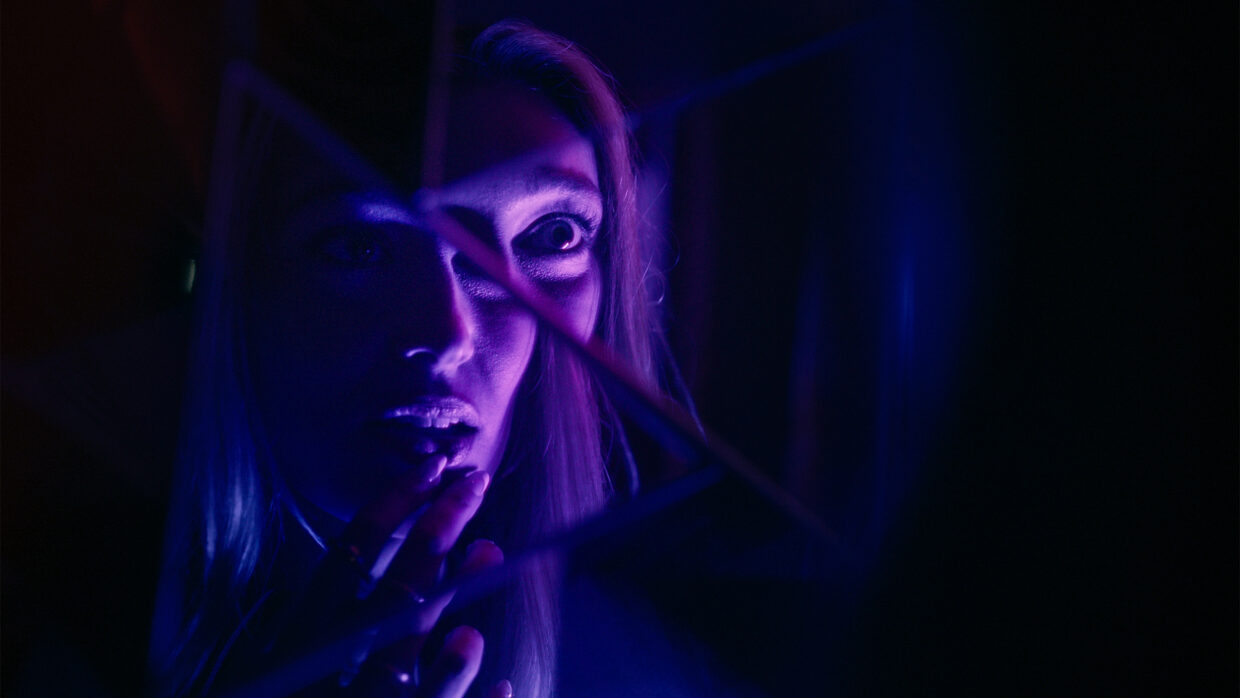 Back to selection
Back to selection
“Establishing the Idea of Ending Scenes Abruptly…”: Editor Greg Jardin on It’s What’s Inside
 Alycia Debnam-Carey appears in It’s What’s Inside by Greg Jardin. Photo Courtesy of Sundance Institute.
Alycia Debnam-Carey appears in It’s What’s Inside by Greg Jardin. Photo Courtesy of Sundance Institute. In the Sundance 2024 Midnight premiere It’s What’s Inside, the feature debut of writer-director Greg Jardin, an uninvited guest with a mysterious suitcase derails a pre-wedding party. Below, Jardin discusses what led him to edit his own film, the balance between long shots and flutter cuts, and more.
See all responses to our annual Sundance editor questionnaire here.
Filmmaker: How and why did you wind up being the editor of your film? What were the factors and attributes that led to your being hired for this job?
Jardin: I started out directing low-budget music videos, which I more or less had to edit myself because we typically couldn’t afford to hire anyone. Over the years, I was able to enjoy the process, grow as an editor, and eventually learn how to execute visual effects. This skillset ended up helping my career as a director, as I was able to pitch myself as someone who could also handle his own post, soup to nuts. So, when It’s What’s Inside was finally getting off the ground, I had a pretty good idea on how I wanted to cut it, and how I thought I could execute the visual effects.
Filmmaker: In terms of advancing your film from its earliest assembly to your final cut, what were goals as an editor? What elements of the film did you want to enhance, or preserve, or tease out or totally reshape?
Jardin: Really, the biggest goal in terms of post was using the edit itself to create a unique voice for the film. Finding the balance of letting longer shots linger, while simultaneously implementing flutter cuts that would sync with the music, was an important part of the process, as was implementing ideas to ratchet up the film’s constant feeling of anxiety. An example of that was establishing the idea of ending scenes abruptly, before the character has even finished their line, which creates a great jarring effect that ends up putting you on edge while you watch.
Filmmaker: How did you achieve these goals? What types of editing techniques, or processes, or feedback screenings allowed this work to occur?
Jardin: We had two feedback screenings, which were both immensely helpful. I’m sure any editor and/or director can relate to the idea of losing objectivity after staring at a cut for months on end, so the fresh perspective was very welcome and informed the latter cuts. Our first screening was mainly comprised of people we didn’t know, and then we invited all of our filmmaker friends for our second one. Each screening, we told the audience as little about the film’s premise as possible in order to really eliminate the idea of expectations in terms of the story.
Filmmaker: What editing system did you use, and why?
Jardin: Adobe Premiere / Adobe After Effects, mainly because the Creative Cloud subscription
allowed me to learn both over the years.
Filmmaker: What was the most difficult scene to cut and why? And how did you do it?
Jardin: Without a doubt, the trickiest section to edit was the first eight to 10 minutes or so. Finding the right balance of how much set up the audience really needs before the main story can kick off ended up being surprisingly difficult. When we started out, the beginning felt rushed, then we worked on it for a while, but then it was dragging, and it honestly took several months, multiple test screenings, and some reshoots to really hone it into something that felt tight, efficient and entertaining.
